As an animal lover, wildlife documentaries are my jam. My husband and I often joke about one particular aspect that is true in the natural world—there’s always a “but.”
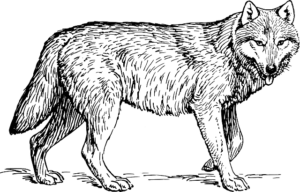
Wolves are fierce hunters, but they need to take their prey on the run i.e., predate.
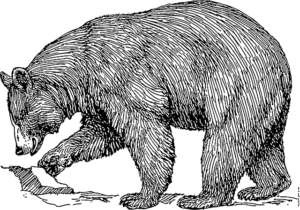 Bears can kill with one strategically placed swat of the paw, but they have terrible eyesight.
Bears can kill with one strategically placed swat of the paw, but they have terrible eyesight.
Unrelated fun fact: If an ant is decapitated during a battle, the disembodied head can continue to fight for hours.
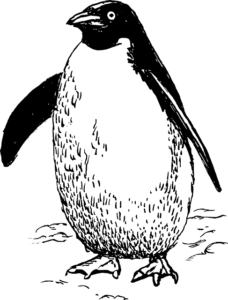
Penguins live in huge colonies—there’s safety in numbers—but they have to swim past their greatest enemy (sea lions) to reach the open ocean to feed.
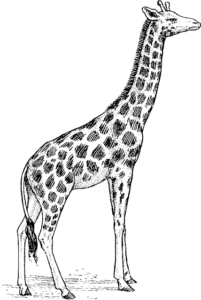
A giraffe’s long neck helps them reach leaves at the top of trees, but that same neck that aids them in gathering food also causes the highest blood pressure of any animal.
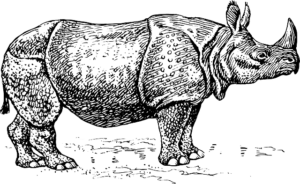
A rhino’s horn is their greatest asset in a fight, but that same horn makes them targets for poachers.

Mongooses are carnivores, but their favorite prey is venomous snakes, including cobras, adders, and vipers, and one good strike could kill them.
Boreal Owls are usually monogamous, but when prey numbers peak, males cheat with up to three females and female boreal owls often have at least one beau on the side. So much for monogamy, right?
 Using sharp claws on their fore-flippers, seals punch out 10-15 breathing holes in the ice and maintain the openings all winter but using these holes can mean sudden death if a hungry polar bear is nearby.
Using sharp claws on their fore-flippers, seals punch out 10-15 breathing holes in the ice and maintain the openings all winter but using these holes can mean sudden death if a hungry polar bear is nearby.
Fun fact: Sea ice is as important to the Arctic as soil is to the forest. It supports the entire Arctic food chain. When ocean water freezes, it expels salts, causing channels to form inside the ice. As sunlight filters through the ice, algae grow within these channels, creating an underwater garden that forms the foundation of the food chain.
Mudskippers are fish who live in the ocean, but they need to walk on land and dig mud burrows to mate.
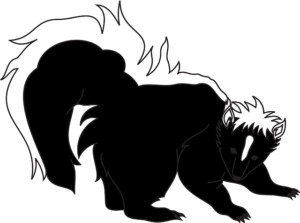 Skunks use an overpowering odor for defense and can spray six times in succession, but once their foul-smelling liquid runs out it takes up to 10-14 days to refill the glands.
Skunks use an overpowering odor for defense and can spray six times in succession, but once their foul-smelling liquid runs out it takes up to 10-14 days to refill the glands.
Roadrunners can sprint at 40 mph, plenty fast to outrun prey, but food is scarce in their dry, desert environment, so they hunt venomous snakes—like rattlers who feed on roadrunners—and risk death.
Fun fact: A rattlesnake can shake its rattle twice as fast as hummingbird wings flutter.
Wildebeests need to migrate to find food once resources dry up, but to make it to the promise land they need to cross croc-infested water.

Corvids are some of the world’s most intelligent animals, but that same intelligence is what attracts ignorant people to hunt them for sport. (Yes, I’m bias. #BlackFeatheredLivesMatter)
Cuttlefish can change shape, color, and texture—20 million pigment cells create a magnificent light show—but they can only mate once in a lifetime.
 Gray whales can submerge for 15 minutes at a time, but a mother’s calf can only hold its breath for 5 minutes, so when under attack by orcas the mother will flip onto her back to create a platform for her baby to lay on, but Momma can’t breathe upside down.
Gray whales can submerge for 15 minutes at a time, but a mother’s calf can only hold its breath for 5 minutes, so when under attack by orcas the mother will flip onto her back to create a platform for her baby to lay on, but Momma can’t breathe upside down.
See where I’m going with this? All these complications and obstacles make the natural world even more interesting.
The same is true for writing.
So, while crafting your storyline—plotted or pantsed—keep “but” in mind. Because without complications and obstacles, you risk boring the reader.
Over to you, TKZers. In your WIP or recent book you’ve read, give us an example of a “but.” Or share a “but” found in nature.

When you’re putting your character into a “I want/need that” situation, the answer that lead to the most conflict and tension is “Yes, but.” There are always consequences. In the current WIP, the protagonist is offered a generous bonus for an assignment which he needs to pay the rent on his grandmother’s assisted living apartment. BUT it means he’ll be out of the country for perhaps two weeks and he won’t be able to keep an eye on her.
Perfect complication, Terry! I can imagine all kinds of trouble from that one “but.”
This is a keeper, Sue. Thanks! I particularly liked the example of the mongoose. It’s what you want but shouldn’t have that always gets you into trouble.
Have a great week, Sue!
So true, Joe! There’s a life lesson, eh? 😉
Thanks. Hope you have an amazing, SJ!
Thanks, Sue, for a wonderful collection of “but facts” from nature, and a great analogy for our characters and stories.
WIP: The Mad River Magic gang is accompanied by their ally, Omni, who is omniscient and omnipresent, but the gang has free will and must make their own decisions.
Nature: The Ohio fox squirrel builds its nest in hollow trees or in leaf balls, high in trees at the end of branches, where it is safe from predators, but those precarious balls are vulnerable to high winds during winter storms.
Have a complication-and-obstacle-free week!
Great complication for your WIP, Steve! And thank you for the “but” about the Ohio fox squirrel. Love learning new things about nature.
Haha. You, too, my friend!
Thanks, Sue. Now I want to go back in time to the 50s and produce a movie for the drive-in market, about atomic fallout producing a giant insect that won’t stop. Title: The Disembodied Ant Head. Starring Vincent Price as the head.
Bickham’s advice is along similar lines as you suggest. End a chapter/scene with a setback. So the answer to the question of whether the viewpoint character realizes his objective might be YES, but that’s not at all interesting or dramatic. It should be YES, BUT…or NO…or (best of all) NO, AND FURTHERMORE!
YES, BUT and NO, AND FURTHERMORE are terrific troublemakers.
I wish you had a time machine so you could make that 50s sci-fi epic with the great Vincent Price. William Castle would be proud 🙂
Hahaha. Vincent Price would’ve been perfect that role!
Yes, but, no, furthermore — Perfect. 🙂
I love this post so much, Sue! “Yes, but” is such a narratively potent “tool” in our writer’s toolset when we torture, I mean, challenge our characters 🙂
In my current WIP (taking a brief break from my mystery) my Empowered “Agent-in-Black” hero Willow Chang has a telekinetic ability, but other Empowered (including criminal and corrupt “good guys”) can detect her presence. Another “yes, but” is that she works for a powerful international government agency (Support) BUT the agency has been compromised.
Thanks for an inspiring post that starts off our week in fine fashion!
Sounds rife with conflict and tension, Dale. Well done!
I love your examples of the “but” in wildlife, Sue, and the way you linked it to writing.
I used JSB’s craft book “Write Your Novel from the Middle” when I wrote my second novel. In the middle of the story, the main character has a mirror moment. She wants to continue to prove the innocence of a friend who was charged with murder, but she knows she will put her own life in danger if she continues.
Have a great week!
Thanks, Kay! Perfect example of how to use the almighty “but.”
Hope you an amazing week, too!
Fascinating, Sue. I love fun facts about the natural world. We’ll never run out of them, I’m sure.
My fave insect is the mantis. Many people are afraid of them, thinking they bite.
And they do. They can take a hummingbird, often hanging out (literally) on the feeder in your yard. Their jaws are wide, proportionate to their heads, and can disable the hapless bird in flight.
Yes, they bite. But . . . they’re unlikely to bite a human because they’re very smart. They know you are too big to be prey. Their eyesight is powerful (at least 60 feet) for their size, and they’ve already sized you up before you ever see them. I was bitten once and barely felt it, because their mouths are small.
I’ve let them crawl all the way from my fingertips to my shoulder. One sat on my shoulder like a danged parrot while I fed another one an earwig. 🙂
Love that image, Deb! Mantis are cool insects. They have a sinister look, which gives them a bad rap, but they’re fascinating little creatures.
Look into their eyes, and you’ll see your own death.
A good novel, mystery or not, is a giant puzzle for the reader to solve. Puzzle pieces like the important moments, the clues, and the emotional beats should all include a real or implied “but.” That keeps the reader on their toes and makes the read more fun.
Exactly, Marilynn. Well said. 🙂
Love the fun critter facts, Sue.
While trying to zip up tight jeans, the complication could be “Yes, butt…”
Hahahaha. Good one, Debbie!
You are so right, it’s the “but” that puts in all the tension/conflict in a story. I make sure I use it when I’m sketching out the short idea for my plot/story idea and in my blurb. “What if…. But…” Great tools.
I hadn’t thought about using the “but” for scenes chapters. I have used some type of cliff hanger at the end of a scene or chapter, which I suppose is the “but”.
Your animal examples were interesting. The “but” adding a nice twist to each creature’s life. Perfect. Thank you.